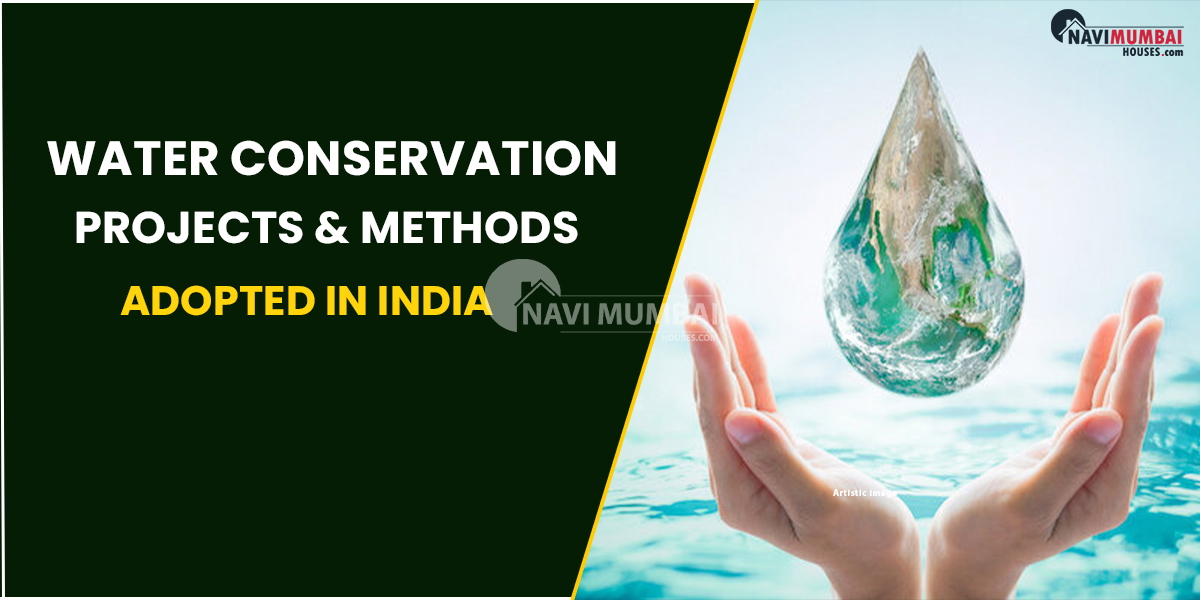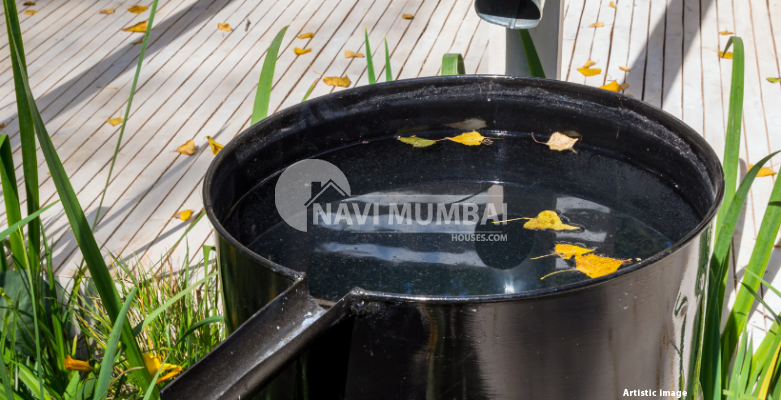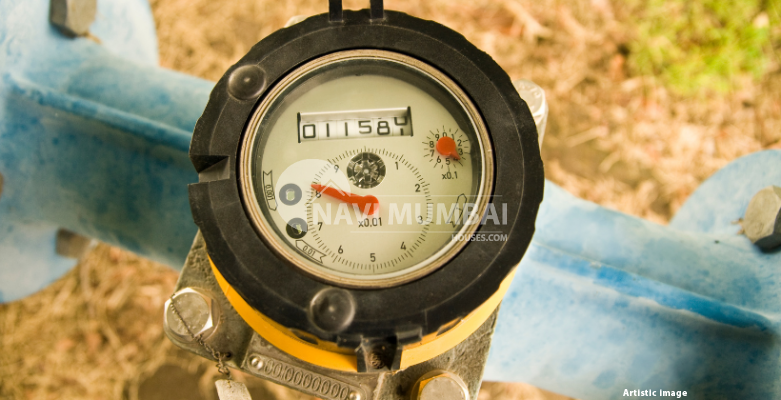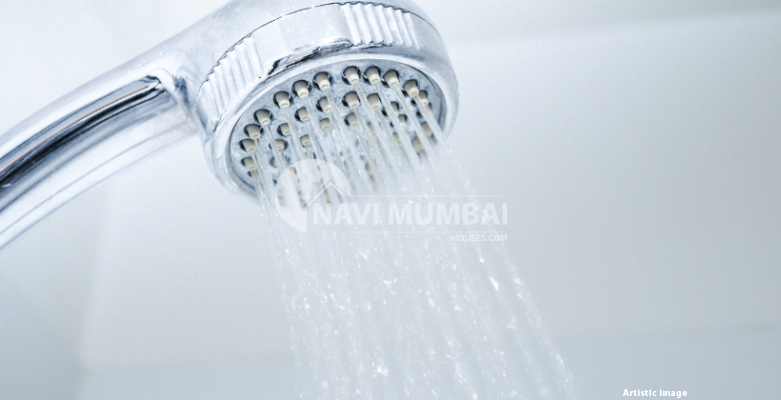
- July 11, 2022
- News
Water Conservation Projects & Methods Adopted In India
Water Conservation Projects : We study the water shortage situation in India and discuss water conservation initiatives and various water conservation measures used in India, as well as ideas that average homes may use to preserve water.
Water shortage is a major worry for governments all over the world. Chennai made international news in 2019 when civic authorities announced ‘Day Zero,’ when the city ran out of water and all reservoirs dried up. According to a research by NITI Aayog, a government think tank, if water conservation practises in India are not implemented, another 20 cities, including Bengaluru, Delhi, and Hyderabad, may run out of groundwater in the coming years.
Are you looking for 4bhk rent in kharghar?
Here is a comprehensive reference to help you understand water conservation and what you can do on an individual basis.
India’s water conservation schemes and initiatives
In 2019, the Indian government’s Ministry of Jal Shakti began the Jal Shakti Abhiyan. It is a national water conservation effort that encourages public engagement in order to promote water conservation at the grassroots level. The water conservation initiative was launch in two parts, from July 1st to September 30th, 2019 and from October 1st to November 30th, 2019.
The government launched the ‘Jal Shakti Abhiyan: Catch the Rain’ (JSA:CTR) on World Water Day, March 22nd, 2021, with the theme ‘Catch the Rain, Where it Falls, When it Falls.’ It covers all districts in India throughout the pre-monsoon and monsoon seasons, up to November 30th, 2021.
The government focuses on water conservation and rainfall collecting structures, rehabilitation of different traditional water bodies tanks, reuse and recharge of bore wells, watershed development, and intense afforestation as part of the programme.
Water Conservation Projects: Sanchay Jal
The Jal Sanchay project was a water conservation programme that began in the Bihar district of Nalanda. The water conservation project centred on the construction of check dams, as well as the desilting and renovation of the irrigation system and traditional water bodies. It also included raising knowledge about traditional water conservation and rainfall gathering practises aimed at keeping the water table levels stable. The initiative was also carried out with the help of local farmers and via campaigns.
The initiative was chosen for a national award for excellence in 2017 as part of the Mahatma Gandhi National Rural Employment Guarantee Programme (MGNREGP).
Water conservation methods
Water conservation initiatives may be carried out anywhere and in any construction. Here are some water conservation measures that can result in significant savings with minimal effort:
Water Conservation Projects: Rainwater collection
Rainwater harvesting is a very efficient means of saving natural water and recharging groundwater levels. Rainwater is collected and allowed to percolate into a deep pit or reservoir in this technique of water conservation, where it seeps down and increases the ground water table.

Water Conservation Projects: Metering of water
Installing water metres and measuring the quantity of water used in residential and business facilities is another effective means of reducing water waste. The volume of water consume is computed and charged in accordance with the water price. Always keep an eye on your water bills for excessively high consumption. It can aid in the detection of any leaks.

Water Conservation Projects: Recycling grey water
Greywater recycling is a way of collecting used and waste water from kitchen sinks, washing machines, and showers and recycling it for use in toilets, watering plants, and other applications. Greywater, in contrast to rainfall collecting, is abundant in volume. Environmentalists have proved that using this recycling technology has cut home water usage by over 70%.
Water Conservation Projects : Reduced-pressure valves
A pressure lowering valve, in essence, regulates the amount of pressure in a hydraulic system. These valves guarantee that a predetermined level of water is utilised. As a result, downstream water system components last longer and water usage is lowered. This is an extremely effective water saving solution for industrial, residential, commercial, and institutional buildings.

Bathroom items that save water
The market is currently saturated with water-efficient toilet tanks, taps, and shower heads that may reduce water use by up to 60%. Changes in spray patterns in taps and showers, as well as increased flushing pressure in toilets, are pushing the frontiers of water conservation without affecting consumption habits.
Different traditional water conservation practises in India
Rapid urbanisation and water pollution have had a significant influence on the quantity and quality of surface and groundwater in many regions of India. The agricultural sector in the nation is still heavily reliant on rainfall. Because of shifting rainfall patterns, the government is contemplating reviving historic water conservation measures.

Some of them are as follows:
Bandhi or Talab
Talabs, sometimes known as ponds, are reservoirs used to retain water for drinking and domestic usage. These ponds can be both natural and man-made. Talab refers to a reservoir that is smaller than five bighas in size, whereas bandhi refers to a medium-sized lake.
Jhalaras
In the past, Jhalaras were built to provide consistent water supply for communal usage, religious rites, and royal events. These are rectangular stepwells with three or four sides of tiered stairs. These stepwells catch underground water seepage from a lake or an upstream reservoir.
Baoli
The ruling elite built baolis for strategic, civic, or charitable reasons. These constructions were accessible to individuals from all walks of life. Baolis are elegantly constructed stepwells with arches and patterns. The purpose of these baolis was mostly dictated by their location. For example, baolis along trade routes were used as rest stops, whilst those within towns were employed for practical reasons and social meetings.
Kund
Kunds were constructed mostly in Gujarat and Rajasthan to save water and catch rainfall for drinking purposes. It is essentially a saucer-shaped catchment area that slopes towards the circular subterranean well in the centre. Modern kunds are made of cement. They used to be coated in disinfectant lime and ash.
Bawari
Bawaris are stepwells that constituted the first water storage networks in Rajasthan and are an example of ancient water conservation systems in India. They were specially intended to channel the region’s low rainfall to artificial tanks via canals built on steep terrain on the city’s outskirts.
Taanka
Taanka is a cylindrical paved subterranean pit into which rainwater flows from courtyards, roofs, and man-made catchments.
Nadi
Nadis are community ponds that gather rainfall from neighbouring natural catchment regions. Because these bodies of water are fed by sporadic, torrential rains, they will quickly silt owing to significant volumes of sandy particles deposited on a regular basis.
Drip irrigation system made of bamboo
Among the several water conservation technologies use in India, bamboo drip irrigation has been used in the country’s northeastern regions. It is a more than 200-year-old technique for irrigating terrace farms invented by indigenous farmers. This system uses bamboo pipes to transport water from perennial springs.
Zings
Water collecting structures known as Zings Zings are found in Ladakh. These are tiny tanks constructed to capture melting glacier water. In such hilly areas, this is one of the simplest water conservation and management solutions. A network of guiding channels directs water from the glacier to the tank.
Kuhls
One of the oldest methods of water conservation in Himachal Pradesh’s steep terrains has been tapping glacial waters flowing from rivers and streams through surface water channels. These waterways, known as Kuhls, are commonly utilised for irrigation of the region’s roughly 30,000 hectares of farms. Hundreds of Kuhls live in the area.
Jackwells
This is one of India’s oldest water conservation measures. Jackwells are tiny trenches that collect rainwater. Originally, residents in the Great Nicobar Islands’ low-lying sections built the construction out of bamboo and wood logs.
Ramtek water harvesting structures
The Ramtek model in Maharashtra is one of the classic water-saving schemes and practises. The system employs a network of groundwater and surface water bodies linked by subterranean and surface canals to build a link from the foothills to the plains. Water rushes to the next tank after filling the tanks on the hills.
What exactly is water conservation?
Simply simply, water conservation is the practise of effectively utilising water and reducing waste or wasteful use. Because fresh, clean water is now considered a finite resource, water conservation has become critical.
Why is water conservation important?
Water conservation is vital for a variety of reasons, including:
- Because water distribution is unequal, significant regions of India remain poor in both rain and groundwater.
- Because of the country’s uneven distribution, the majority of the population faces water scarcity.
- The demand for water in cities is greater than the supply. Furthermore, water conservation will assure the supply of safe drinking water for future generations. This may be accomplish by ensuring that freshwater consumption from an ecosystem does not exceed its natural rate of replenishment.
- Water is needed to irrigate crops in India since rainfall is largely seasonal. Water safeguards the ecology and wildlife.
- Furthermore, saving water saves energy. That example, by employing smart appliances that are both water and energy efficient, we can cut water consumption while also saving electricity.
- Water conservation will keep more water in the ecosystem and assist to preserve wetland habitats for plants, wildlife, and aquatic life. It is especially critical during the dry seasons.
- Freshwater extraction from icebergs has expanded dramatically in recent years. The need for water has also increased significantly, as has the demand for water-based power generation.
Water conservation methods: Simple household water-saving tips
Ways to Save Water in the Kitchen Do not clean food with running water.
When washing veggies, avoid using running water. Instead, soak the veggies in a dish of water for a few minutes before washing them. Frozen meals should not be defrosted under running water. Frozen things can be thawed by putting them outside overnight.
Switch to water-saving gadgets at home and work.
When purchasing a dishwasher, look for one with a ‘light-wash’ setting. Only use an electric dishwasher for heavy loads and shorter cycles.
Wastewater should be recycle.
Recycle the wastewater from RO water purifiers to clean your car or water your plants. This water can also be use to sweep or to pre-rinse laundry. Do not drain any remaining water from water bottles. It may be use to water plants or to fill bird water bowls.
Turn off the water while doing the dishes.
Turn off the water while you’re not rinsing if you have to wash a few dishes by hand.
Bathroom Water Conservation Methods
Shower for less minutes.
A four-minute shower consumes around 20 to 40 gallons of water. Shower for less minutes. A partially filled tub uses less water. Water-saving showerheads and shower timers can also be install.
Turn off the water when not in use.
When brushing your teeth or shaving, turn off the water. Before brushing, pour a glass with water and rinse your mouth with it. While shaving, use brief spurts of water to clean the razors.
Water Conservation Projects: Examine the toilet for leaks.
After using the faucets, turn them off completely. Water leaking from faucets can waste up to 50 gallons of water every day. As quickly as possible, repair any leaking faucets.
Check the toilet flushing systems for leaks on a regular basis. Simply place dye tablets or drops of food colouring into the tank, and if colour emerges in the bowl one hour later, your toilet is leaking.
Water conservation as a solution to water-related issues
Several countries have been experiencing significant water shortages, primarily as a result of overpopulation. Water table depletion, which is partly driven by deforestation, has become a major problem.
Global warming also has an influence by causing water shortages in some areas and exacerbating current crises in others.
In comparison to developing nations, developed countries are able to address the issue and preserve water using a variety of measures such as recycling wastewater, desalinating saltwater, building dams, importing food, exploiting deep water aquifers, and so on.
Water conservation, mostly through reuse and recycling, might be an effective solution to the problem. These solutions can meet about one-fifth of a city’s water demands. Traditional water conservation measures are being revive in several nations, including India.
Interesting facts on water conservation
Water is a natural resource that is essential for the survival of life on Earth. However, water mismanagement and waste have resulted in a global water crisis impacting many regions of the world.
- Rainfall contributes for about 85 percent of India’s available water. The remaining 15% is due to melting snow.
- As part of a large water revitalization effort, the Indian government started the ‘Namami Gange’ scheme for the Ganges river basin.
- India’s annual water consumption is 1100 billion cubic metres.
- The agriculture industry consumes 80 percent of the country’s total water supply.
- Water scarcity also results in lost income since many women spend around 150 million workdays each year transporting and collecting water.
- Almost ten crore people drink water with high fluoride levels.
Here are some water facts you should be aware of:
- There is only so much water on the planet. According to the water cycle, the water that is currently accessible is recycle endlessly.
- Almost 97 percent of all water on the planet is salty, which is unfit for human consumption. About around 3% of water is freshwater, of which only 0.5 percent is suitable for drinking; the remainder is found in glaciers, the atmosphere, soil, and other places where it cannot be use.
- Plants are essential for sustaining the environment and require water to survive.
- An adult’s body has 50 to 65 percent water, but newborns have a larger amount.
You’re looking for Rental Home In Navi Mumbai we have the Best Rental Properties In Navi Mumbai Like Ready to Move & Nearby possession: https://navimumbaihouses.com/property/search/rent/navi-mumbai-all/
If you want daily property update details please follow us on Facebook Page / YouTube Channel / Twitter









